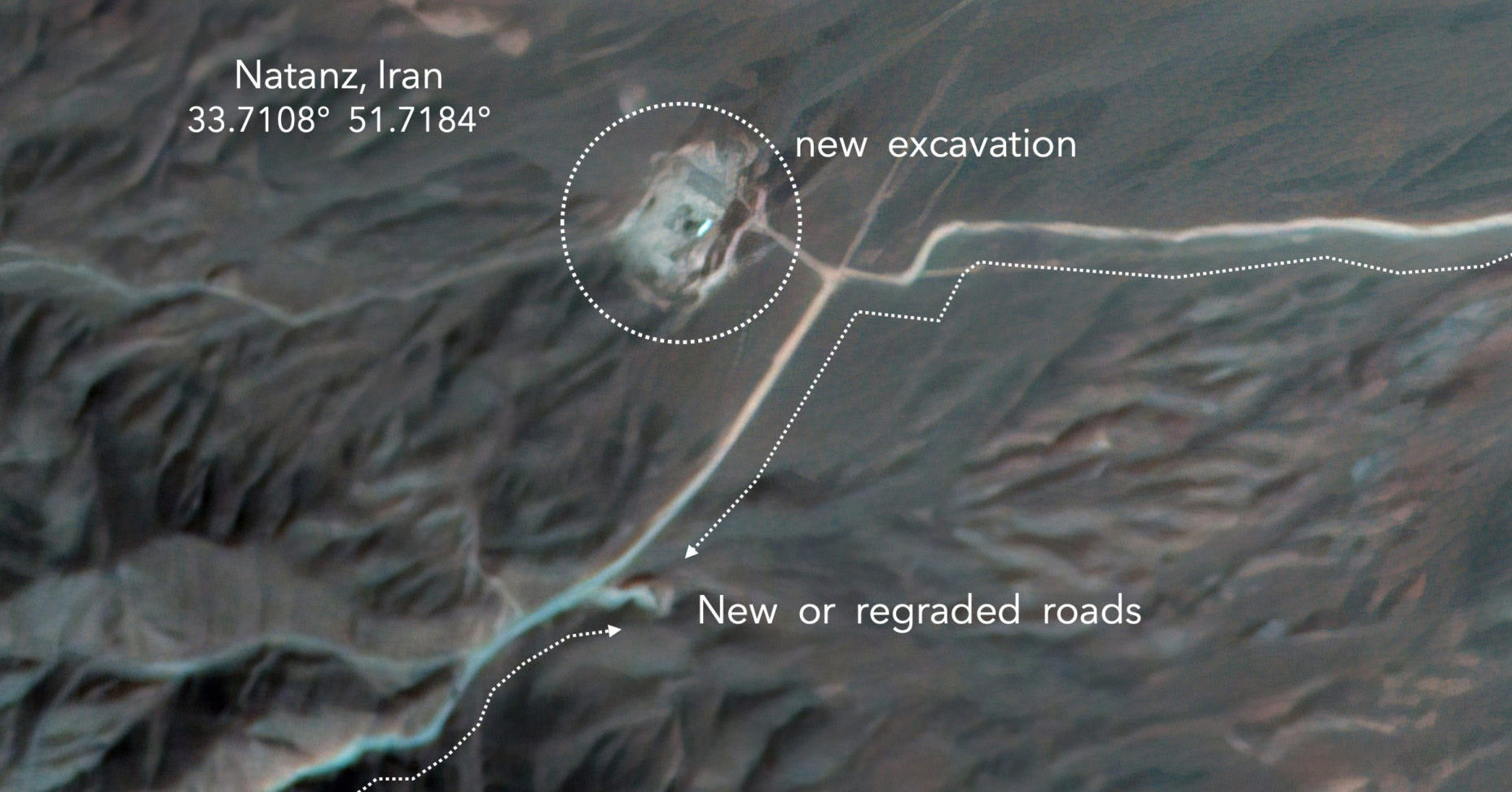
Satellite Photos Show Disturbing Development in Iran
Iran has begun construction at its Natanz nuclear facility, satellite images released Wednesday show, just as the U.N. nuclear agency acknowledged Tehran is building an underground advanced centrifuge assembly plant after its last one exploded in a reported sabotage attack last summer.
The construction comes as the U.S. nears Election Day in a campaign pitting President Donald Trump, who has taken a tough stance against Tehran’s nuclear ambitions with harsh economic sanctions, and Democrat Joe Biden, who has expressed a desire to return to the Iran nuclear deal negotiated when he was vice president during the Obama administration. The outcome of the vote likely will decide which approach America takes.
Since August, Iran has built a new or regraded road to the south of Natanz toward what analysts believe is a former firing range for security forces at the enrichment facility, images from San Francisco-based Planet Labs show.
A satellite image Monday shows the site cleared away with what appears to be construction equipment there.
Analysts from the James Martin Center for Nonproliferation Studies at the Middlebury Institute of International Studies say they believe the site is undergoing excavation.
“That road also goes into the mountains so it may be the fact that they’re digging some kind of structure that’s going to be out in front and that there’s going to be a tunnel in the mountains,” said Jeffrey Lewis, an expert at the institute who studies Iran’s nuclear program. “Or maybe that they’re just going to bury it there.”
Iran’s mission to the United Nations did not immediately respond to a request for comment.
Ali Akbar Salehi, the head of the Atomic Energy Organization of Iran, last month told state television the destroyed above-ground facility was being replaced with one “in the heart of the mountains around Natanz.”
Rafael Grossi, the director-general of the International Atomic Energy Agency, told The Associated Press on Tuesday that his inspectors were aware of the construction.
He said Iran had previously informed IAEA inspectors, who continue to have access to Iran’s sites despite the collapse of the nuclear deal.
“It means that they have started, but it’s not completed. It’s a long process,” Grossi said.
Trump in 2018 withdrew the U.S. from Iran’s nuclear deal, under which Tehran would limit its uranium enrichment in exchange for the lifting of economic sanctions. The president has called it “the worst deal ever” and a “disaster.”
When the U.S. ramped up sanctions, Iran publicly abandoned those limits.
Iran now enriches uranium to up to 4.5 percent purity, and according to the last IAEA report, had a stockpile of 2.32 tons. Experts typically say 1.15 tons of low-enriched uranium is enough material to be re-enriched up to weapons-grade levels of 90 percent purity for one nuclear weapon.
Iran’s so-called breakout time — the time needed for it to build one nuclear weapon — is estimated now to have dropped from one year under the deal to as little as three months.
The Islamic Republic claims its nuclear program is for peaceful purposes, though many in the West believe Tehran aims to use it to pursue atomic weapons.
Natanz, built underground to harden it against airstrikes, long has been at the center of those fears since its discovery in 2002. Centrifuges there still spin in vast halls under 25 feet of concrete. Air defense positions surround the facility in Iran’s central Isfahan province.
Despite being one of the most-secure sites in Iran, Natanz was targeted by the Stuxnet computer virus — believed to be the creation of the U.S. and Israel — before the nuclear deal.
In July, a fire and explosion struck its advanced centrifuge assembly facility in an incident Iran later described as sabotage. Suspicion has fallen on Israel, despite a claim of responsibility by a previously unheard-of group.
There have been tensions with the IAEA and Iran even at Natanz, with Tehran accusing one inspector of testing positive for explosives last year. However, so far inspectors have been able to maintain their surveillance. something Lewis described as very important.
“As long as they declared to the IAEA in the proper time frame, there’s no prohibition on putting things underground,” he said. “For me, the real red line would be if the Iranians started to stonewall the IAEA.”
For now, it remains unclear how deep Iran will put this new facility. And while the sabotage will delay Iran in assembling new centrifuges, Lewis warned the program ultimately would regroup as it had before and continue accumulating ever-more material.
[jwplayer oRFzNuoz]
The Western Journal has reviewed this Associated Press story and may have altered it prior to publication to ensure that it meets our editorial standards.
Truth and Accuracy
We are committed to truth and accuracy in all of our journalism. Read our editorial standards.
Advertise with The Western Journal and reach millions of highly engaged readers, while supporting our work. Advertise Today.












